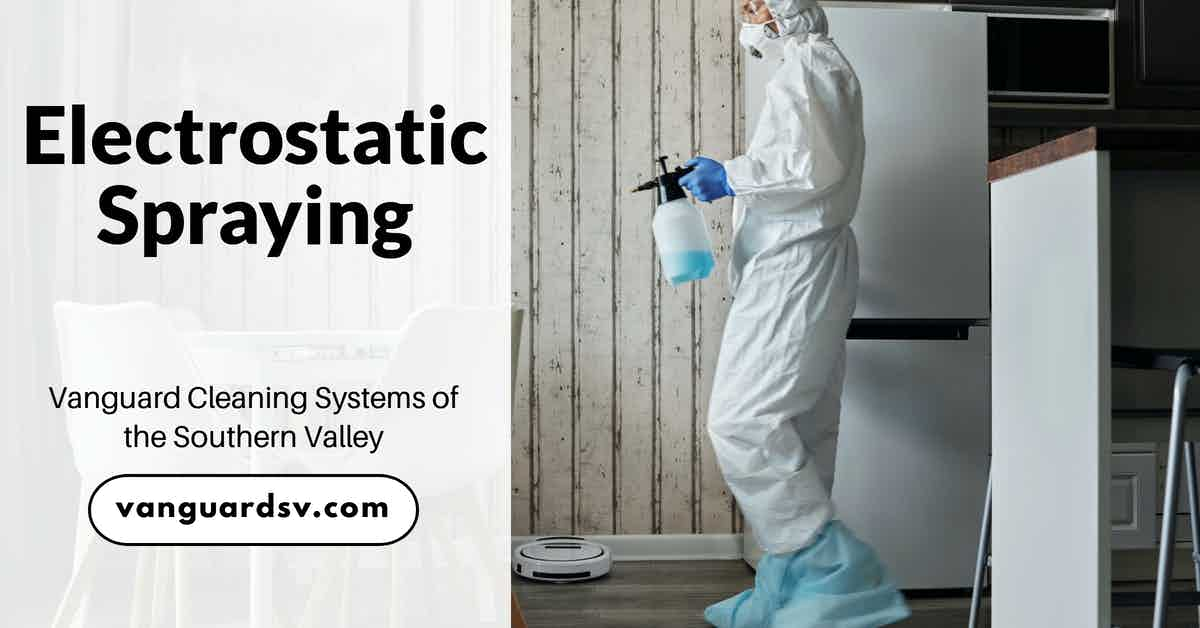An increase in public cleanliness, safety, and hygiene due to the COVID-19 pandemic has driven demand for highly effective sanitation equipment and services, especially electrostatic spraying appliances and chemicals.

Public Fears Drive Demand for Electrostatic Spraying
Unease regarding the cleanliness of public facilities and distrust of other's personal hygiene has led to a demand for more efficient and effective cleaning services.
According to a recent article published by the Associated Press, citing a study conducted by Sagentia;
Hygiene concerns related to Covid-19 have left 58% of the GB population uncomfortable using public devices such as card readers, with 54% feeling the same way about public toilets.
[...] 73% expect changes prompted by Covid-19 to influence R&D priorities.
Almost half anticipate innovation in areas such as chemicals and materials science, for instance, to develop antiviral coatings.
Almost a third (32%) expect advancements in mechanical or physical technologies to improve hygiene, with 20% saying this is likely to involve energy or light-based sanitization.
80% of Brits are paying more attention to handwashing and cleanliness.
Of these, 70% say it’s because they can’t be sure other people share their hygiene standards.
[...] 35% feel uncomfortable eating in a fast-food restaurant or café and 33% are uncomfortable about taking part in a group class at the gym.
The concerns have resulted in a significant spike in demand for increased cleaning frequencies, better disinfectants, and more effective technologies.
The solution?
Electrostatic spraying.
Electrostatic Spraying Efficiency
Electrostatic sprayers are widely touted as the single most effective tool on the market for applying disinfectant products.
The accolade is due to the technology's ability to provide 360 degrees of coverage and adhere to surfaces.
According to a recent article published by CleanLink;
The technology is somewhat simple: As the chemical exits the electrostatic sprayer, it is atomized and given a positive charge.
The positively charged spray droplets are attracted to — and travel toward — negatively charged objects, creating a 360-degree wraparound effect on the targeted surface.
The result is full coverage of the chemical.
Additional studies have found that electrostatic sprayers use a lower volume of disinfectant product when compared to manual applications or other spray methods, thereby reducing the total cost of ownership.
Further, fewer service providers are needed to fully disinfect large facilities and difficult to clean furniture, further reducing long-term operational costs.
Cleaning Before Spraying a Necessity
Those jumping on the electrostatic disinfection bandwagon are cautioned--it is not a magical device and requires the removal of surface soil via standard cleaning practices to be effective.
Failure to do so will negatively impact the disinfectant dwell time and result in low-quality sanitation outcomes and the presence of deadly germs and bacteria.
[...] managers must understand that spraying technologies such as foggers and electrostatic machines are designed for disinfection, not cleaning.
It’s critical that soils be removed from surfaces before any disinfectant is applied.
A failure to remove soils makes the disinfectant less effective, thus making the efforts futile.
Additionally, prior to selecting a spraying technology, it is important to analyze the disinfectant product, which is often proprietary to specific spraying systems.
Important criteria to analyze include:
- Product claims against specific germs and bacteria you are trying to control or eliminate, such as SARS-CoV-2.
- Dwell times, and;
- Suitability for the surface that is being disinfected.
Using Electrostatic Sprayers Safely
The use of personal protective equipment when operating electrostatic disinfection sprayers is a must.
Typical PPE for electrostatic applications include:
- Goggles.
- Respirators.
- Gloves, and, often;
- Isolation suits.
Additionally, the area being treated should typically be vacated by non-service personnel while the disinfectant is being applied to avoid inhalation.
Once the application process is finished, depending on the product type and the virus or bacteria being killed--both of which impact dwell time--occupants can safely return to normal operations.
Takeaway
Public weariness over the year-long battle against COVID-19 and its various mutations has increased demand for highly effective cleaning and disinfection processes and technologies--chief among them, electrostatic disinfection sprayers.
Despite the products' highly touted efficacy, surface cleaning is still a must to ensure proper dwell time and surface exposure.
Additionally, standard safety precautions must be observed to protect the service provider and facility occupants from accidental exposure to chemical disinfectants.
Initial investments in product purchasing and ongoing maintenance and training can be cost-prohibitive for many organizations, making outsourcing an appealing alternative to an in-house acquisition or resorting to conventional spray and wipe cleaning and disinfection methods.
If you would like more information regarding the effectiveness of high-performance infection prevention and control measures, or if you would like to schedule a free, no-obligation onsite assessment of your facility's custodial needs, contact us today for a free quote!
In Bakersfield, CA, call (661) 437-3253
In Fresno, CA, call (559) 206-1059
In Valencia CA, or Santa Clarita CA, call (661) 437-3253
In Palmdale, CA or Lancaster, CA, call (661) 371-4756

